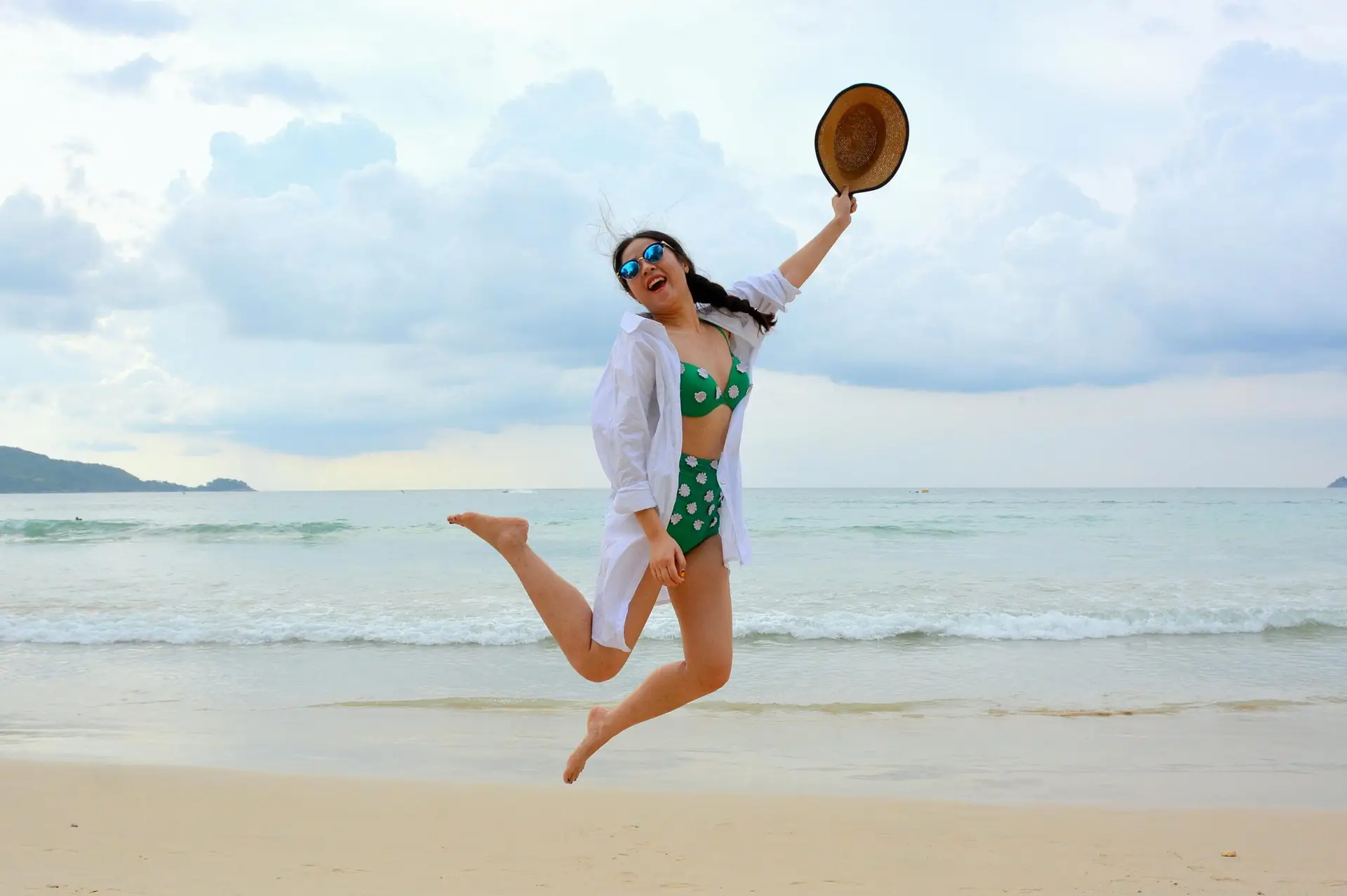
Vertigo Doctor in Lakewood Ranch: Vertigo, dizziness, and balance disturbances can make even simple daily tasks feel like climbing a mountain. Whether it’s the spinning sensation when you roll over in bed, the unsteadiness while walking to your car, or the constant slight swaying that follows a long cruise, these symptoms can severely impact your ability to work, drive, and enjoy life. If you’ve been searching for a “Vertigo doctor in Lakewood Ranch, Florida,” you deserve a solution that goes beyond masking symptoms with medication. At Lavender Family Chiropractic, our Upper Cervical Chiropractic approach addresses the root cause of vestibular disorders—misalignments in the top two vertebrae of the neck—so you can find lasting relief.
In this comprehensive 3,500-word guide, you’ll learn:
- What Is Vertigo? Definitions, distinctions from general dizziness, and why it happens.
- The Most Common Vestibular Disorders – BPPV, PPPD, MdDS, and other dysfunctions explained.
- Why the Upper Cervical Spine Matters – How atlas and axis misalignments disrupt your balance system.
- Meet the Vertigo Doctor Near You – An in-depth look at Lavender Family Chiropractic and our Lakewood Ranch practice.
- Advanced Diagnostics – 3D CBCT imaging, functional nervous system scans, and movement analysis.
- Our Signature Treatment Protocol – Gentle corrections, vestibular rehabilitation, nutrition, and lifestyle support.
- Real Patient Journeys – Detailed case studies showing how we’ve helped folks just like you.
- Top 10 FAQs – Everything you need to know about upper cervical chiropractic for vertigo.
- Taking the Next Step – How to schedule your initial evaluation and what to expect.
Let’s dive in.
1. Vertigo Doctor in Lakewood Ranch and What Is Vertigo? Understanding the Spinning Sensation
Vertigo isn’t just “feeling dizzy”—it’s a profound disruption of your sense of safety and stability. One moment, you’re standing steady; the next, the world around you seems to tilt, spin, or lurch. For many Lakewood Ranch residents, these episodes come without warning: a quick turn to look over your shoulder, rolling over in bed, or simply standing up from a seated position can trigger intense spinning sensations, nausea, and a racing heart. Over time, the fear of “when it will happen again” can become just as disabling as the vertigo itself, leading to avoidance of social activities, hesitation to drive, and even withdrawal from work and family life.
Imagine walking your dog through a nearby neighborhood park and suddenly feeling as though the pavement beneath your feet has become a seesaw. Or picture preparing dinner in your own kitchen and having to grab the counter for support because the room seems to whirl around you. These scenarios aren’t hypothetical—they’re daily realities for many who suffer from vestibular disorders. Beyond the immediate discomfort, chronic vertigo can contribute to poor sleep, heightened anxiety, and sensitivity to motion in crowded or visually busy environments such as grocery stores and shopping centers.
Traditional approaches—prescription medications, Epley maneuvers performed by an ENT, or generalized physical therapy—often provide only partial relief or temporary respite before symptoms return. What’s frequently overlooked is the role of the upper cervical spine in the body’s balance circuitry. Misalignments in the top two vertebrae (the atlas and axis) can place subtle mechanical stress on the brainstem—the very hub that integrates signals from the inner ear, eyes, and muscles to maintain equilibrium. Until that structural interference is addressed, many patients continue to cycle through treatments without finding enduring relief.
At Lavender Family Chiropractic, we recognize that true recovery begins by pinpointing and correcting the root biomechanical cause of dizziness. Our focused Upper Cervical Chiropractic approach is designed to restore proper alignment at the craniovertebral junction, optimize neurological communication, and set the stage for lasting balance—so you can move through your Lakewood Ranch life with confidence, free from the constant fear of the next dizzy spell.
2. Common Vestibular Disorders: Beyond “Just Vertigo”
Although patients often describe any dizziness as vertigo, several distinct vestibular conditions can underlie those spinning or swaying sensations. Recognizing which one you have helps tailor the most effective treatment.
2.1 Benign Paroxysmal Positional Vertigo (BPPV)
- Cause: Loose calcium carbonate crystals (otoconia) migrate into one of the semicircular canals, typically the posterior canal.
- Symptoms: Short bursts (10–60 seconds) of intense spinning when you change head positions—rolling over in bed, looking up, or bending forward.
- Standard Care: Canalith repositioning maneuvers (Epley, Semont) can often relocate the crystals, but recurrence rates are up to 50% within five years.
2.2 Persistent Postural-Perceptual Dizziness (PPPD)
- Cause: Often follows an acute vestibular insult (BPPV, vestibular neuritis). The brain continues to “guard” against motion, leading to chronic dizziness and hypersensitivity to visual patterns.
- Symptoms: Constant unsteadiness, non-spinning dizziness, increased discomfort in visually busy environments (grocery aisles, crowds).
- Standard Care: Vestibular rehabilitation, cognitive behavioral therapy, and low-dose SSRIs.
2.3 Mal de Débarquement Syndrome (MdDS)
- Cause: Prolonged motion exposure (cruise, flight) “rewires” your balance center; once you’re back on solid ground, the brain continues to sense movement.
- Symptoms: Persistent rocking, swaying, or bobbing, typically alleviated temporarily by being in motion (driving).
- Standard Care: Limited; some benefit from vestibular therapy or off-label benzodiazepines.
2.4 General Vestibular Dysfunction
- Cause: Can stem from inner-ear inflammation (vestibular neuritis), vestibular migraines, Meniere’s disease, or nerve compression.
- Symptoms: Chronic dizziness, imbalance, motion sensitivity, spatial disorientation.
- Standard Care: Medication, vestibular exercises, dietary modifications.
At Lavender Family Chiropractic, we see many patients who have cycled through these standard treatments without lasting relief. Upper cervical misalignments frequently play an unrecognized role, irritating the brainstem and disrupting fluid flow—our targeted corrections can make a profound difference.
3. The Upper Cervical–Vestibular Connection: Anatomy Meets Neurology
Why should a chiropractor focus on the top two vertebrae (C1, the atlas, and C2, the axis) to treat an inner-ear problem? The answer lies in their intimate relationship with the brainstem and cerebrospinal fluid (CSF) dynamics.
3.1 Brainstem Interplay
The brainstem—home to critical vestibular nuclei—exits the skull base directly above C1. Subluxations (misalignments) of the atlas can place mechanical stress on the exiting brainstem and associated blood vessels or nerves, leading to impaired signal transmission from the inner ear and muscles.
3.2 Proprioceptive Feedback Loops
The C1–C2 joint capsule is densely packed with mechanoreceptors that inform the brain about head position. Even minor misalignments (less than 2 mm) can generate erroneous input, confusing the central balance system.
3.3 Cerebrospinal Fluid Flow
CSF cushions the brain and spinal cord. Misalignments at the craniovertebral junction can alter CSF flow patterns, potentially leading to subtle pressure changes in the inner ear or brainstem, manifesting as dizziness or headaches.
By precisely correcting atlas and axis positioning, Upper Cervical Chiropractic removes these interferences—allowing your vestibular, visual, and proprioceptive systems to synchronize and restore clear balance cues.
4. Why Lavender Family Chiropractic Is Your Top Vertigo Doctor in Lakewood Ranch
When searching for a vertigo doctor in Lakewood Ranch, you want expertise, advanced technology, and individualized care. Here’s what sets Lavender Family Chiropractic apart:
4.1 Specialized Upper Cervical Focus
Unlike general chiropractic practices that adjust the entire spine, we dedicate our training and clinic to the upper cervical region. This narrow focus yields unmatched precision in correcting atlas and axis misalignments.
4.2 Experienced Providers
- Dr. Jacob Temple, D.C. and Dr. Will Guzinski, D.C. bring over a decade of combined experience specifically treating vestibular disorders.
- Both are certified in multiple upper cervical techniques (KneeChest Upper Cervical, Blair, Toggle), ensuring each patient receives the approach best suited to their anatomy.
4.3 State-of-the-Art Diagnostics
- 3D Cone Beam CT (CBCT) Scans: We perform precision imaging that captures bone positions down to 0.1 mm accuracy—far beyond what standard X-rays provide.
- Functional Nervous System Scans: Heart rate variability (HRV) testing, posture sway analysis, and skin conductance measurements reveal autonomic imbalances often associated with chronic dizziness.
- Instrument-Assisted Motion Analysis: High-speed video analysis of gait and balance tasks quantifies deficits and tracks improvement objectively.
4.4 Comprehensive, Multimodal Care
- Vestibular Rehabilitation: Custom exercise protocols for BPPV canalith repositioning, habituation drills for PPPD, and motion adaptation for MdDS.
- Nutritional Counseling: Anti-inflammatory diets, hydration strategies, and targeted supplementation (e.g., magnesium, Vitamin D) that support nerve function and reduce vestibular irritation.
- Lifestyle and Ergonomic Coaching: Posture correction, workstation setup, and home safety modifications to minimize fall risk and reduce neck strain.
4.5 Proven Results in Lakewood Ranch
Our Lakewood Ranch office, located at 5899 Whitfield Ave STE 107 Sarasota, Florida, has become a trusted destination for those who’ve “tried everything” yet still struggle with dizziness. Hundreds of residents—from seniors fearful of falls to busy professionals unable to focus—have found measurable relief through our approach.
5. Advanced Diagnostics: Seeing What Others Miss
Precision care begins with precise information. At Lavender Family Chiropractic, our diagnostic toolkit goes well beyond manual palpation:
5.1 3D CBCT Imaging
- Provides detailed, three-dimensional views of C1/C2 orientation.
- Identifies subluxation vectors and rotational components invisible on 2D X-rays.
- Guides our adjustment vector planning for the most efficient and stable correction.
5.2 Functional Nervous System Testing
- Heart Rate Variability (HRV): Low HRV often correlates with chronic stress and vestibular dysfunction.
- Postural Sway Analysis: Using pressure-sensitive platforms, we measure your center-of-pressure deviations during static and dynamic tasks.
- Skin Conductance and Sympathetic Tone: Assess autonomic nervous system balance, which can influence fluid regulation in the inner ear.
5.3 Instrument-Assisted Gait and Balance Analysis
- Software quantifies deviations, asymmetries, and compensatory patterns.
- Objective metrics allow us to demonstrate progress over time and fine-tune rehabilitation exercises.
These technologies empower us to pinpoint the precise nature of your misalignment, monitor neurological function, and deliver data-driven care.
6. Our Signature Treatment Protocol: Root-Cause Relief
At Lavender Family Chiropractic, treatment unfolds in five integrated phases:
Phase 1: In-Depth Intake and Evaluation
- Comprehensive medical history focused on dizziness triggers, previous treatments, and lifestyle factors.
- Physical examination: postural analysis, range of motion, and palpation of upper cervical tissues.
- Baseline scans: CBCT imaging, HRV testing, sway platform analysis, and gait recording.
Phase 2: Precise Upper Cervical Correction
- We calculate the atlas misalignment vector (direction and magnitude) from your CBCT data.
- Using instrument-assisted or hand-held methods, we apply a gentle, low-force impulse to C1.
- No rotation, twisting, or “cracking”—just a focused nudge that allows the bone to settle back into its proper position.
Phase 3: Vestibular Rehabilitation Integration
- BPPV Protocols: Particle repositioning maneuvers (modified Epley) taught for home practice.
- Habituation Exercises: Gradual exposure to motion stimuli for PPPD desensitization.
- Motion Adaptation: Rhythmical head movements to reset aberrant MdDS patterns.
Phase 4: Nutritional and Lifestyle Optimization
- Anti-Inflammatory Diet: Emphasis on omega-3 rich foods, leafy greens, and antioxidants to support nerve healing.
- Hydration Strategy: Adequate fluid intake to maintain inner-ear endolymph homeostasis.
- Ergonomic Adjustments: Screen height, chair support, and sleep posture to protect cervical alignment.
Phase 5: Follow-Up and Maintenance
- Re-imaging (CBCT) at 4–6 weeks to confirm stability of atlas correction.
- Repeat functional testing to document improvements in HRV, sway metrics, and gait symmetry.
- Ongoing maintenance visits spaced according to individual needs—often every 3–6 months—to reinforce correction and prevent recurrence.
This multimodal protocol ensures that we don’t just suppress your vertigo; we restore the natural harmony of your balance systems.
7. Real Patient Journeys: Hope and Healing in Lakewood Ranch
Case Study A: Overcoming Chronic BPPV
Background: Maria, a 55-year-old teacher, suffered daily vertigo spells triggered by turning her head at work. Epley maneuvers provided temporary relief, but symptoms recurred weekly for three years.
Intervention: CBCT revealed a 1.2 mm left posterior atlas subluxation. After two upper cervical adjustments and home canalith maneuvers, Maria’s episodes decreased from daily to zero by week six. At three months, gait analysis showed a 75% reduction in sway deviation, and she returned to teaching without fear.
Case Study B: Breaking Mal de Débarquement (MdDS)
Background: Tom, a 48-year-old engineer, developed constant rocking sensations after returning from a two-week cruise. Vestibular therapy and SSRIs offered minimal relief.
Intervention: Functional scans showed sympathetic overactivity and postural sway consistent with vestibular hypersensitivity. After three precise atlas and axis corrections, combined with motion adaptation exercises, Tom’s swaying subsided by 60% in four weeks. By week eight, he reported feeling “grounded” and resumed regular exercise.
Case Study C: PPPD with Visual Sensitivity
Background: Lila, a 34-year-old graphic designer, experienced persistent non-spinning dizziness in busy environments—supermarkets and open-plan offices triggered intense discomfort.
Intervention: Upper cervical alignment coupled with habituation protocols and nutritional support reduced her symptom severity score from 8/10 to 2/10 over eight weeks. Her HRV improved, indicating better autonomic balance. She now shops comfortably and works full-time without vestibular distraction.
These stories illustrate how addressing the upper cervical spine can transform lives that seemed stuck in perpetual motion sickness.
8. Top 10 FAQs About Vertigo and Upper Cervical Chiropractic
- How does an upper cervical chiropractor differ from a general chiropractor?
Upper cervical specialists focus exclusively on C1 and C2, using precision adjustments guided by detailed imaging. This contrasts with full-spine manipulation, which may apply general force without pinpoint accuracy. - Is upper cervical chiropractic safe for treating vertigo?
Yes. Our instrument-assisted methods deliver low-force impulses tailored to your anatomy, avoiding high-velocity twists or pops that some patients find uncomfortable. - How many visits are required before I see results?
While individual responses vary, many patients notice symptom reduction within 4–6 visits. Full stabilization often takes 8–12 visits, followed by maintenance every few months. - Will my insurance cover upper cervical care?
Most major medical and chiropractic plans include coverage for atlas adjustments. Our administrative team will verify your benefits and submit claims on your behalf. - Can children or seniors receive this care?
Absolutely. Adjustments are scaled to body size and tissue sensitivity—safe for pediatric cases (vertigo from ear infections) and older adults (balance improvement, fall prevention). - What if I’ve already tried vestibular therapy and medications?
Upper cervical care complements—or in many cases supersedes—vestibular rehab. By removing structural interference at the brainstem level, you may achieve relief when other therapies plateau. - How long will my relief last?
Many patients maintain symptom-free status for years after their initial series, especially when adhering to recommended home exercises, nutrition guidance, and periodic check-ups. - Do you treat other balance-related conditions?
Yes—we help with neck pain, migraines, TMJ dysfunction, POTS (postural orthostatic tachycardia syndrome), and other neurologic conditions rooted in upper cervical misalignment. - What should I bring to my first appointment?
Any prior imaging (MRI, CT scans), vestibular test results, a list of current medications, and a detailed symptom journal noting triggers and episode frequency. - How do I know if this is the right approach for me?
If you experience spinning, unsteadiness, motion sensitivity, or repeated BPPV episodes—and haven’t found lasting relief—upper cervical chiropractic could address the root biomechanical cause.
9. Taking the Next Step: Your Path to Steady Living
Ready to reclaim steady footing and bid farewell to spinning rooms? Here’s how to get started with Lakewood Schedule With Us!
Lavender Family Chiropractic in Sarasota Florida offers complimentary consultations to learn more about you. Click the link below!
https://intake.chirohd.com/new-patient-scheduling/724/lavender-family-chiropractic
Visit our Website!
To learn more about us go to http://www.chiropractorsarasotaflorida.com
We also service Bradenton, Parrish, Ellenton, Ruskin, Venice, Tampa, St. Pete, Osprey, Longboat, Lakewood Ranch, Myakka City.
If you are not local, visit www.uccnearme.com to find a doctor in your area!
10. Conclusion: A Balanced Future Awaits
Vertigo and chronic dizziness don’t have to rob you of life’s joys. At Lavender Family Chiropractic, we blend advanced imaging, precise upper cervical corrections, vestibular rehabilitation, and supportive nutrition to address the true source of imbalance. No more patching symptoms with medication alone—our Lakewood Ranch practice offers a systematic, evidence-informed pathway back to clear, confident movement.
Don’t let another day slip by in a blur of spinning walls and unsteady steps. Reach out now, schedule your evaluation, and discover why so many in Lakewood Ranch call us the top “Vertigo doctor near me.” Your journey to lasting balance and enhanced quality of life starts here.
Experience the Lavender Family Chiropractic difference—where precision meets compassion, and every adjustment brings you closer to a world without dizziness.



